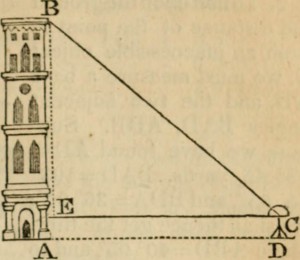
Internet Archive Book Images. (2014). Image from page 249 of “Elements of geometry and trigonometry” (1835). Retrieved from https://www.flickr.com/photos/internetarchivebookimages/14783427932/
Although I made it through high school calculus class with a decent grade, I would not say it was a positive experience. Geometry, on the other hand, was completely different. It was FANTASTIC! Interesting point – the same teacher taught me both classes so we can eliminate that variable right there. Now before I go further, I need to remind you I was an English major and I have not taken a formal math class in a couple of decades. (Ouch. That really hurt to write.) What I remember most about geometry was the problem sets and being asked to work through them in groups, hitting challenges that my teacher knew we were going to hit, and then moving through them with his guidance and instruction to frame our methods and tools.
That memory of geometry class came bounding back as I was reading “Learning from Worked Examples: How to Prepare Students for Meaningful Problem Solving” by Alexander Renkl at the University of Freiburg, Germany. His article outlines both the effectiveness and a plan for using worked examples. What I found most helpful was the way in which Renkl reviewed his strategies and provided examples of how they can be used in different situations to maximize student learning. To give you a sneak peek, here are the ten principles that Renkl uses to differentiate worked example strategies:
- self explanation – elaborating on and/or comparing examples
- explanation-help – providing instructional explanations
- example-set – demonstrating sets of problems to emphasize similarities/differences
- easy-mapping – providing visual or auditory cues to connect like components
- meaningful-building blocks – breaking a problem down into building blocks
- studying-errors – providing explanations for incorrect solutions
- model-observer – videos displaying models (competent and non-competent) completing worked examples
- focus-on-learning – integrating problems into the learning domain
- imagery – visualizing how the problem would be solved
- fading – remove worked steps as learners become more adept in the process
(p. 122 – 125)
Renkl, A. (2014). Learning from worked examples: How to prepare students for meaningful problem solving. In V. A. Benassi, C. E. Overson, & C. M. Hakala (Eds.), Applying science of learning in education (pp. 118-130). American Psychological Association.